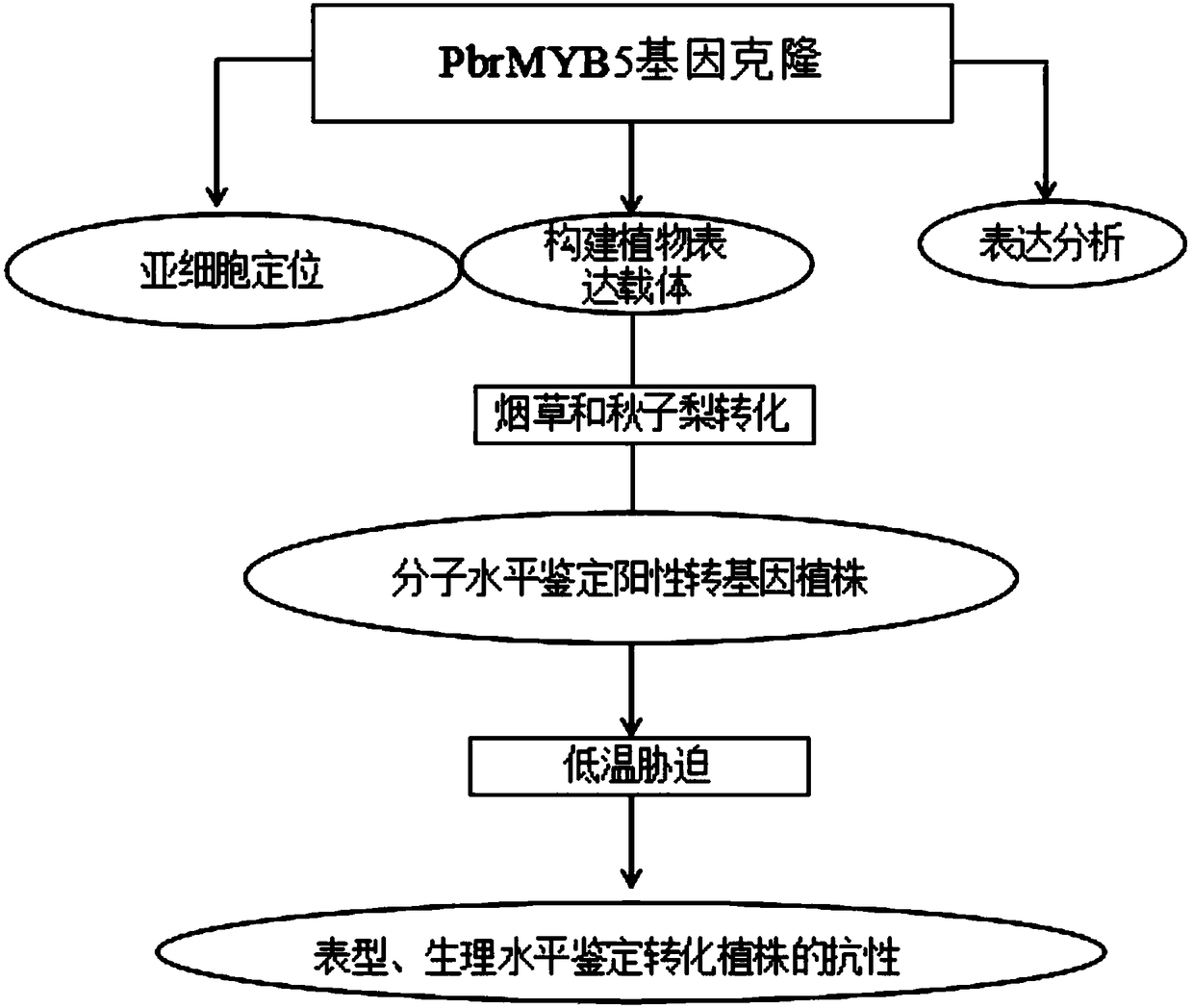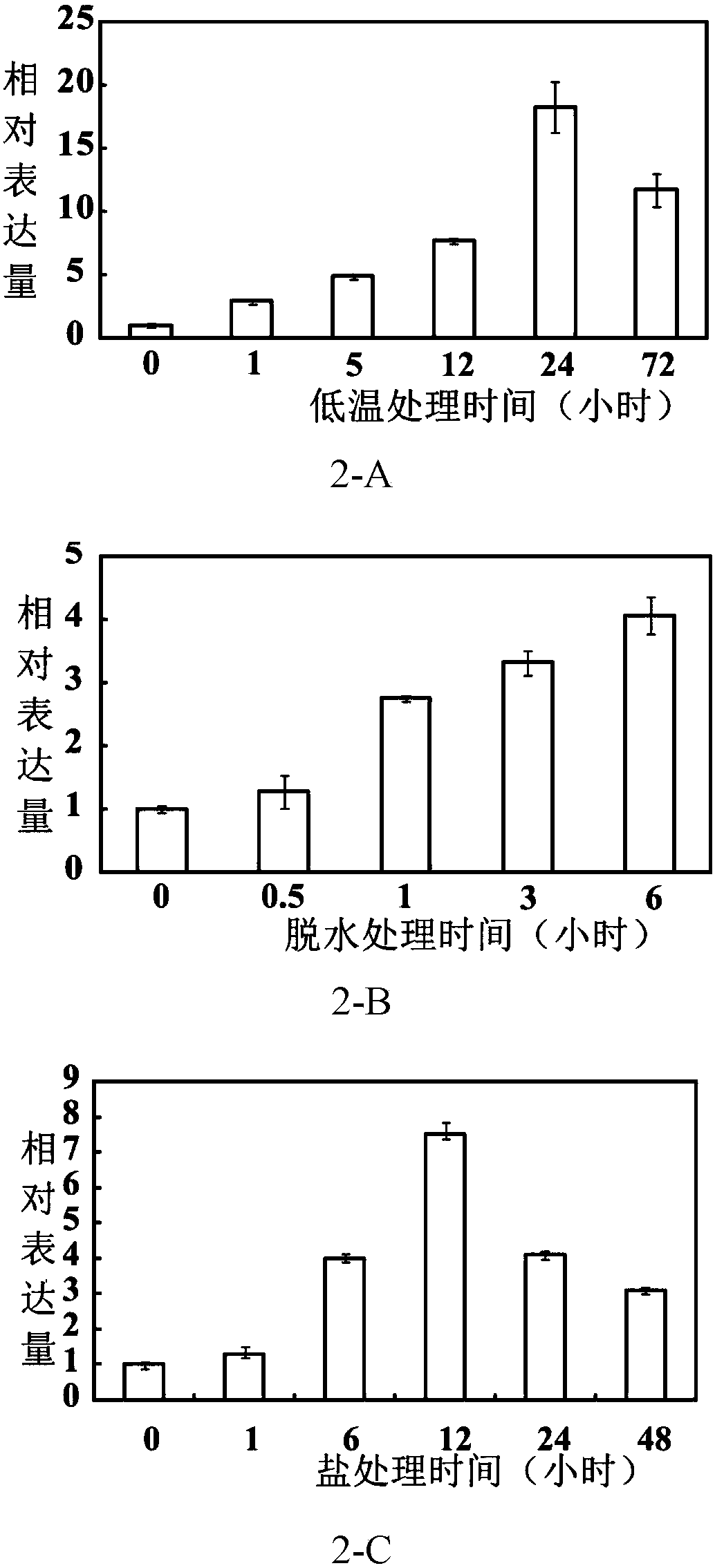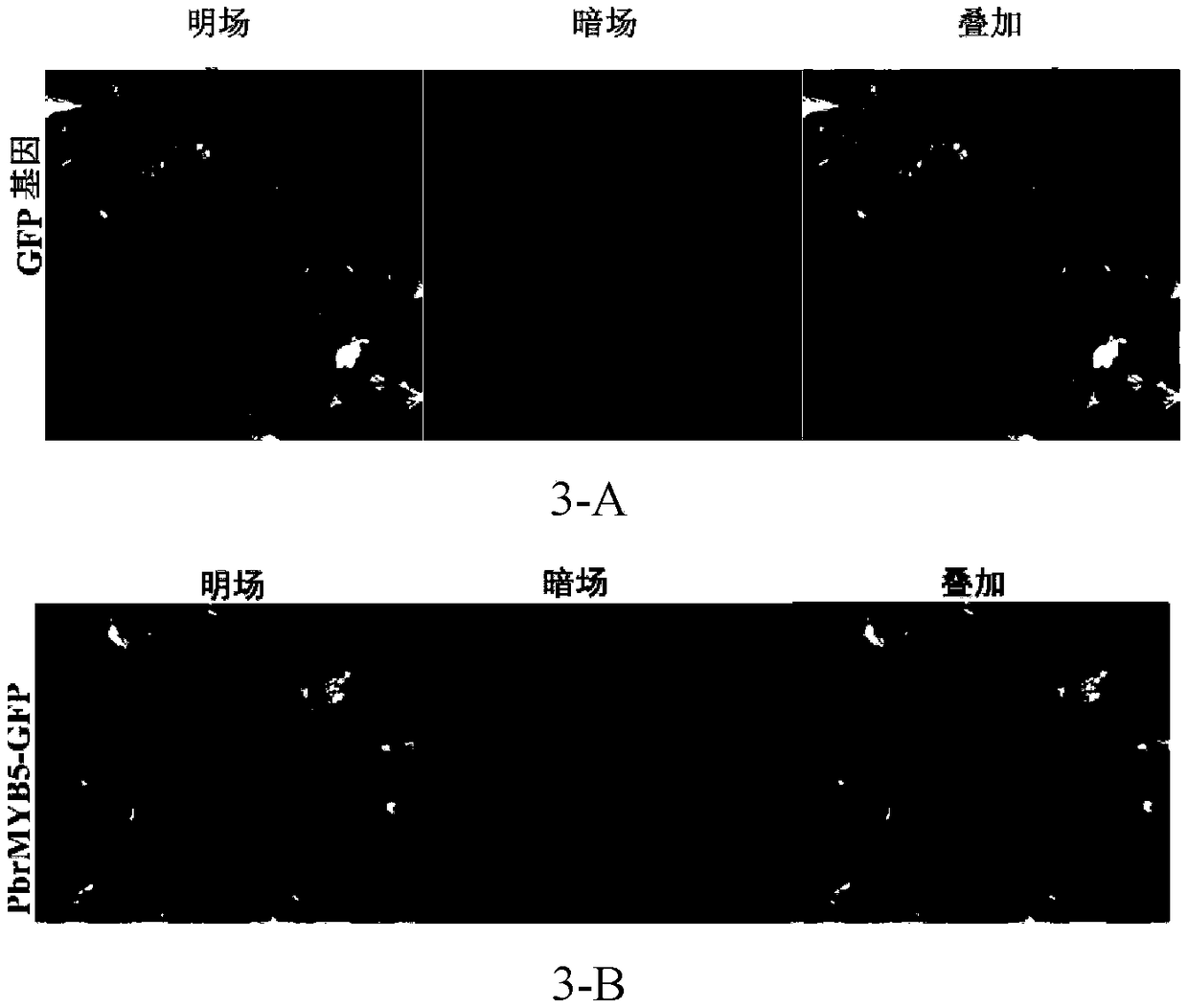Pyrus betulaefolia cold-resistant factor PbrMYB5 and application thereof
A transcription factor and gene technology, which is applied to the cold-resistant transcription factor PbrMYB5 of Du pear and its application field, can solve the problems of lack of cold-resistant genes, and achieve the effects of increasing VC content, improving cold resistance, and realizing sustainable agricultural development.
- Summary
- Abstract
- Description
- Claims
- Application Information
AI Technical Summary
Problems solved by technology
Method used
Image
Examples
Embodiment 1
[0032] The technical process of the present invention is as figure 1 shown
[0033] The PbrMYB5 gene was cloned, the subcellular localization of the gene was analyzed, the expression pattern analysis under different stress conditions, and the overexpression vector was constructed for tobacco transformation and the silencing vector was transformed for Qiuzi pear, and the positive plants were identified at the molecular level. Tobacco and pear seedlings were subjected to low temperature stress to observe the phenotype and identify the resistance of transformed plants from the physiological level.
Embodiment 2
[0035] Cloning of full-length cDNA of PbrMYB5 gene in Du pear
[0036] Using the MYB cis-element in the PbrDHAR2 promoter of the pear dehydroascorbate reductase gene PbrDHAR2 as bait, screen the yeast one-hybrid library, screen the nucleotide sequence of the gene PbrMYB5, submit the sequence to the pear genome database for BLAST, and select the score The highest nucleotide sequence and submit to Pfam for validation of conserved protein domains. A pair of specific primers for amplifying the sequence was designed using Primer Premier 5.0. The primer pair for amplifying the full-length gene of PbrMYB5 is:
[0037] Forward primer 1: 5'-ATGAGGAACCCATCGCCTTCGTCGA-3' (SEQ ID NO.3), reverse primer 1: 5'-CTCCGTTGGATCATTAACCCCTTTGGCG-3' (SEQ ID NO.4); use RT-PCR method to amplify its full length. The detailed steps are as follows: 1 μg of Du pear RNA was treated with 1 U of DNase I at 37°C for 30 minutes and immediately placed on ice, and 1 μL of 50mM EDTA was added and treated at 65...
Embodiment 3
[0040] qRT-PCR analysis of PbrMYB5 gene under different stress conditions
[0041] In order to analyze the response pattern of PbrMYB5 gene to low temperature, dehydration and high salt in Du pear, the expression pattern of PbrMYB5 gene was analyzed using Real-time PCR technology. The RNA was extracted by the CTAB method, and the synthesis of the first strand of DNA was carried out according to the operation manual of the TOYOBO reverse transcription kit. In the 20μL reaction system, there are: 10ul 2×Mix, 0.1ul cDNA, 5μL primer (using ubiqutin as the internal reference primer, the length is 208), 4.9ul water. The program of quantitative PCR is shown in Table 1:
[0042] Table 1 Quantitative PCR program
[0043]
[0044]
[0045] figure 2 It is a schematic diagram of expression of PbMYB5 gene under low temperature, dehydration and salt stress. in: figure 2 A is that the gene of the present invention is processed at 4 degrees in Du pear seedlings (not transgenic), ...
PUM
| Property | Measurement | Unit |
|---|---|---|
| molecular weight | aaaaa | aaaaa |
Abstract
Description
Claims
Application Information
 Login to View More
Login to View More - R&D
- Intellectual Property
- Life Sciences
- Materials
- Tech Scout
- Unparalleled Data Quality
- Higher Quality Content
- 60% Fewer Hallucinations
Browse by: Latest US Patents, China's latest patents, Technical Efficacy Thesaurus, Application Domain, Technology Topic, Popular Technical Reports.
© 2025 PatSnap. All rights reserved.Legal|Privacy policy|Modern Slavery Act Transparency Statement|Sitemap|About US| Contact US: help@patsnap.com



